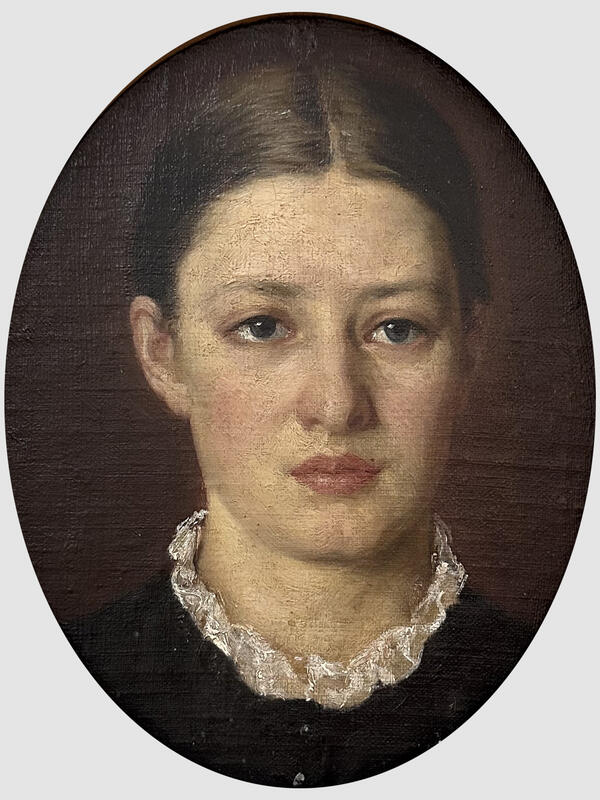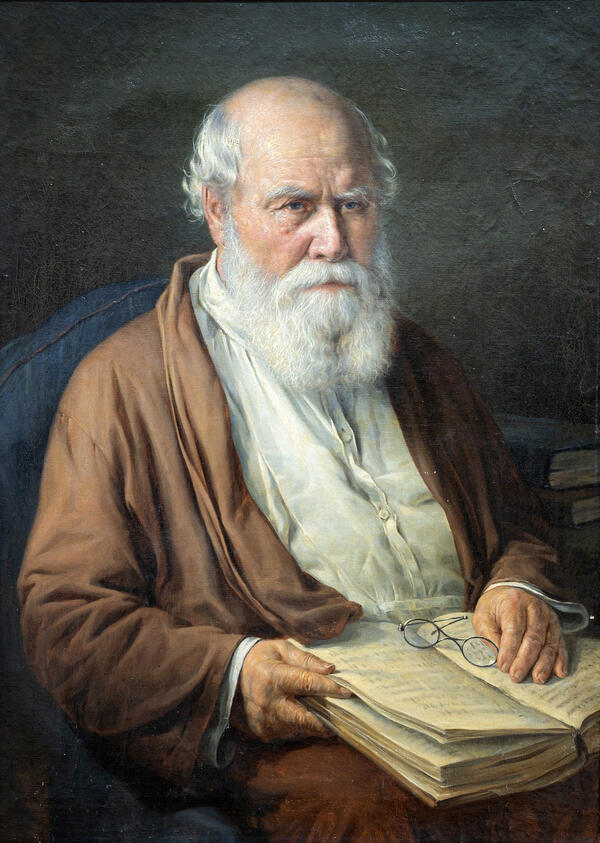The collection of the Boris Kustodiev House Museum includes a watercolor by Pavel Vlasov, one of three works transferred to the museum from the Astrakhan Art Gallery in 2002.
The small watercolor belongs to the early Astrakhan period of the artist’s work. “Volsk” is a plein air study. At the turn of the 20thcentury, such studies were often created by students of the Academy working on perspective and required the artist to be good at crafting composition. Soon after that, fascinated with the new style of Impressionism, artists would leave their studios and go to gardens, meadows, fields, and riverbanks. Suddenly, the most ordinary and modest landscapes became a subject of study and interest. Often, they were considered to be not just quick studies but as self-sufficient compositions.
In this watercolor, the artist depicted a wharf in an old town, located on the right bank of the Volga River in the Saratov Governorate. It is particularly picturesque due to its unusual hilly terrain. The history of this town is associated with the names of Tsar Michael I of Russia, Prince Alexander Menshikov, Prince Alexander Vyazemsky, and the Old Believer Vasily Zlobin.
In the 19thcentury, Volsk became an important merchant town that traded in bread. Merchants bought grain and flour and sold them to wholesalers. By the beginning of the 20thcentury, the town was home to “millionaire merchants”. The Sapozhnikovs, well-known merchants and patrons of the arts, arrived in Astrakhan from Volsk. The Volga River, depicted by Pavel Vlasov, was the main trade route. The chalk mountains, covered with forest in some areas, can be seen from any part of the town. Limestone deposits contributed to the development of the cement industry in Volsk. The very first cement works were built there in 1896.
Despite using a small sheet of paper, the artist
successfully conveyed the vast expanse of the Volga River, the steep riverbank,
and boats docked close to each other at the wharf. The composition extends
beyond the painting, and it is easy to imagine and “complete” the image of the
town which lies behind the steep hill where the small Malykovka River flows into
the wide Volga.






